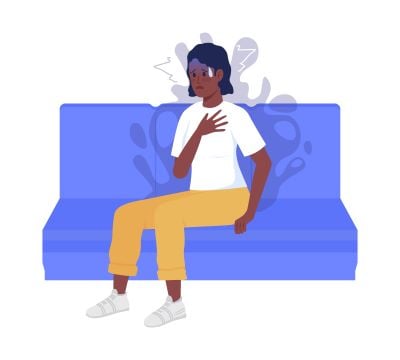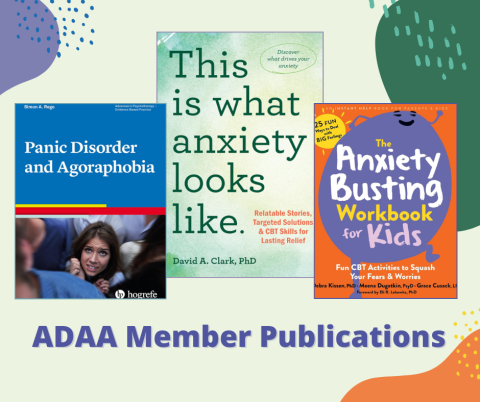Is it Danger or Discomfort? Tips for Handling Panic!
Is it Danger or Discomfort? Tips for Handling Panic!

First, recognize this. Panic isn’t what you think it is. It’s not an attack at all, and that’s a misleading name for it. We’re stuck with the name but recognize that it’s not something attacking you. It’s you having an internal reaction of fear – your heart rate changes, your muscles tense up, your stomach feels bad, you have scary thoughts of calamities, and so on. It’s a reaction, of fear, even when you don’t know what you’re reacting to.
Ask yourself:
Is there a clear and present danger threatening me now, or am I just picturing one in my mind?
If you’re in danger, protect yourself. But if you were actually being threatened – by a dog, a fire, or a mugger - you’re wouldn’t be reading this! You’d already be fighting or running away, or shouting out for help.
If you’re still standing here, in a state of panic, worrying and wondering what to do, and feeling self-conscious about looking afraid, that’s usually because there’s no immediate threat. It’s a false alarm. Panic is a false alarm.
Ask yourself:
Is it Danger or Discomfort?
If you were in actual physical danger – not just afraid of a “what if?” thought or a racing heart, but facing a physical threat, you’d already be protecting yourself. If there were a dog attacking you, or a car veering your way – you probably wouldn’t notice feeling afraid. You’d be too busy protecting yourself – kicking the dog, or steering away from the car. We don’t do much thinking when we’re dealing with an actual emergency, we’re too busy protecting ourselves!
But if instead you’re in a restaurant or a shopping mall with the same scary thoughts you’ve had many times before, your mind racing with thoughts of losing control –and there’s no threat in front of you to hit or run from – then what you’re feeling is probably discomfort rather than danger. Discomfort is a mild word, I know, but that’s how panic tricks you. You feel discomfort and treat it like danger.
What’s good for danger? If you’re in danger, protect yourself with the traditional choice of fight, flight, or freeze. Fight, if it looks weaker than you. Run, if it looks slower. And if it looks stronger and faster than you, then freeze, and hope it doesn’t see so good. That’s all we’ve got for danger!
What’s good for discomfort? Hang out with the uncomfortable thoughts and feelings and give them time to pass. Claire Weeks described this as “floating”. Make no strong response, just hang out and give it time to pass.
Examine your usual responses to panic.
People often want to flee, and hide their trouble from others. Noticing this can help you decide what kind of problem you face at that moment. If you were actually having a heart attack, you wouldn’t be quietly leaving the party, trying to keep it a secret - you’d be asking, probably shouting, for help! If you were actually about to faint, you wouldn’t be running out to the parking lot – you’d stay inside where it’s safe, and sit down!
Do these things:
Acknowledge and accept the fact that you are temporarily afraid. You don’t need to resist or oppose the fear because it will fade away no matter what you do. Have you ever had a panic attack that didn’t end? No, and nobody else has either!
Your job isn’t to make the attack end. Your job is to wait for it to end.
Wait and Watch. Stay in place and wait for the panic to subside. If panic occurs while you have a job to do – driving a car or giving a presentation – continue to do your job as best you can. If you’re in a more passive role – sitting in a waiting room or walking through a mall – stay where you are and observe your experience. Take notes of the thoughts, emotions and physical sensations you experience, and write them down.
You might think you should distract yourself from the panic symptoms. But that’s too much like fighting your fear, and usually produces poor results.
Consider this. If I’m motivated to distract myself from a problem, what does that tell me about the problem?
It tells me that it’s not an emergency. If you were in a bank during an armed robbery, would you balance your checkbook to distract yourself from the gunshots? Probably not! You’d be too busy rushing out of there!
And:
If you feel short of breath, or tight in your chest – sigh, slowly. Drop your shoulders a little and sigh, the way you might sigh if someone told you something really annoying. If you feel short of breath, and want to breathe more comfortably, this will help you inhale more comfortably. The sigh is a small, slow exhale. Don’t start with an inhale – start with the sigh.
Panic is a solvable problem! There’s much more to learn about how to help yourself with panic. Look for methods that help you work with the symptoms of panic, rather than against. You’ll find more information at https://www.anxietycoach.com



















